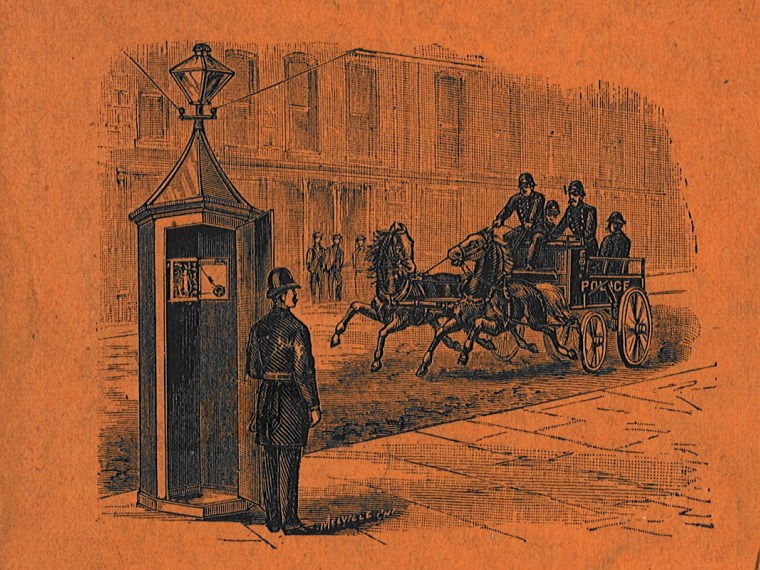Although the fire telegraph system reached a state of near perfection in 1877, the police alarm system had a number of problems that became apparent in the large labor riots of that year. Communication from the street to stations depended largely upon runners and telegrams from the large businesses with telegraph operators. Communication between stations was limited to the slow dial telegraph described in the previous post. The Police Department Annual Report recommended hiring additional Morse code operators.
The next few years saw rapid improvements. In 1878, the same year that general telephone service started in Chicago, the police installed an internal telephone system to communicate between stations. It was soon expanded to the Fire Department and other city agencies and connected to the general system.
Now the few citizens with telephones were able to call directly. It is possible that people used to face-to-face communication didn't entirely trust telephones in an emergency. The first mention I am able to find in the Tribune of anybody phoning the police was 1888. And it was more in the nature of an alibi. "I was running away because I was trying to find a telephone."
In 1880, the “little joker” system was initiated. Similar to the Fire Department’s Joker system, a pull of the police alarm would bring a police wagon in three or four minutes. The wagon had stretchers, blankets and several burly policemen. Thus. it could serve either as an ambulance or a paddy wagon. The box also had a telephone so patrolmen could communicate with the station. The Tribune reported that it eliminated the problem of loafing policemen, but that policemen yelling into the phone all night kept neighbors awake.
The police favored alarm boxes with locked doors, which trapped the caller’s key until the wagon arrived. This both prevented false alarms and guaranteed the caller would stick around to tell the officers what the problem was.
1886 saw the installation of improved police alarm boxes. The telephone remained. Citizens with a key could send the following messages:
- Police Wagon
- Thieves
- Forgers
- Riot
- Drunkard
- Murder
- Accident
- Violation city ordinance
- Fighting
- Test of Line
- Fire
In addition to the official Police Alarm which "private residences, banks, business houses, etc." could install, the Telephone Directories and the Chicago City Directories show a flurry of private burglary and fire alarm companies springing up in the 1890s. Just like alarm companies today, they would send somebody to the premises to check for trouble. They would either repair the alarm or summon the police.





Add a comment to: Calling 911, 1877-1900: Technology That Changed Chicago